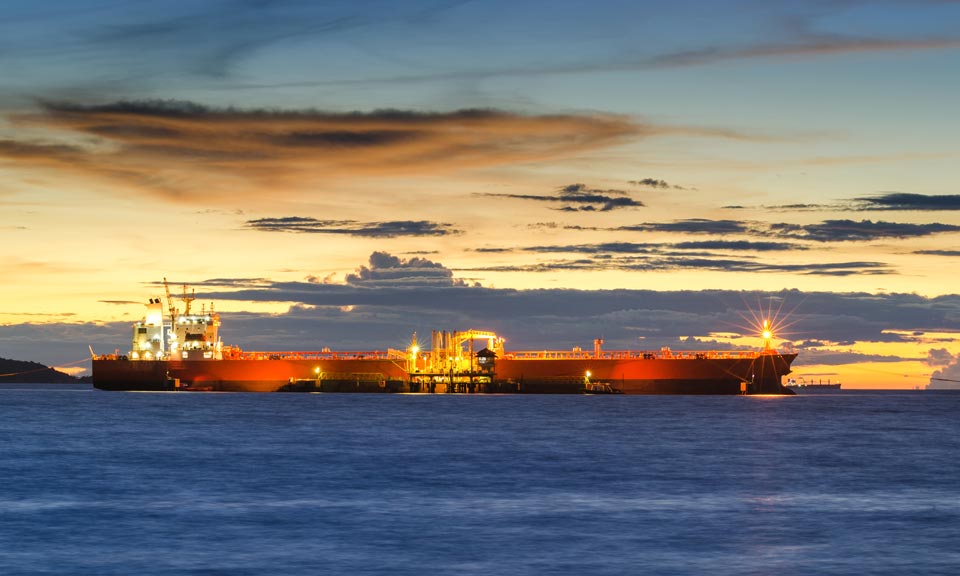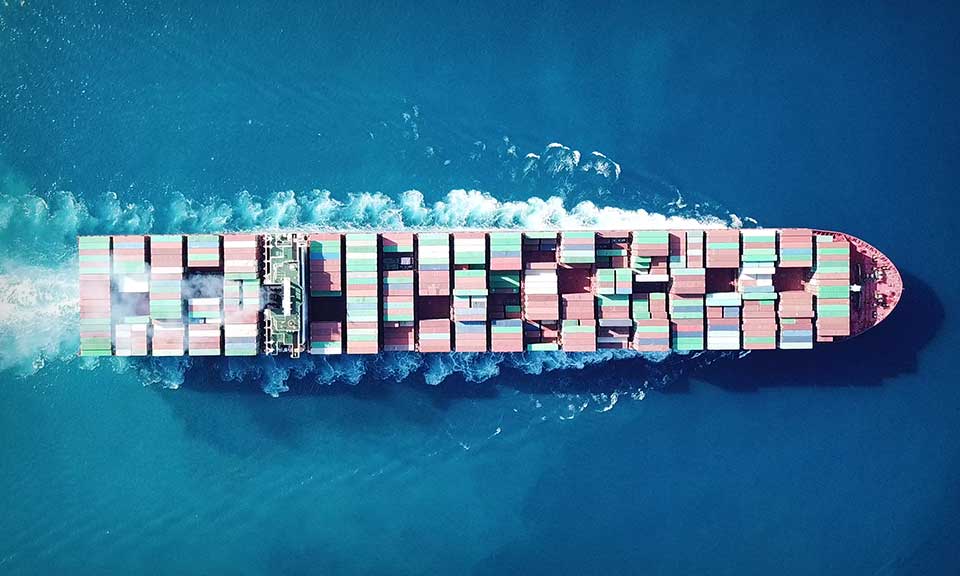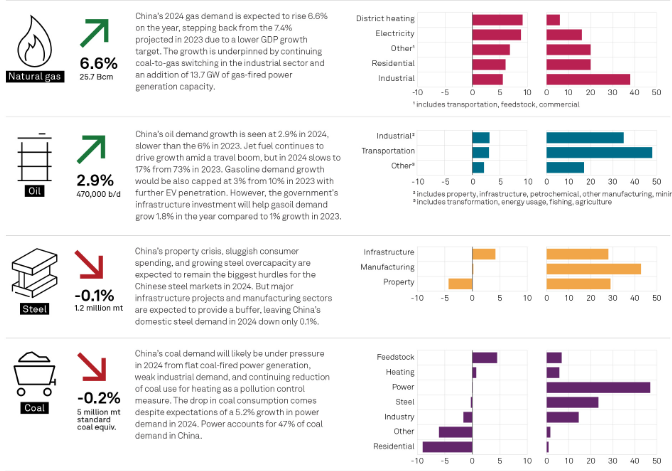Middle Eastern jet fuel flows to Europe climb as Russian sanctions loom

Europe's jet fuel purchases from the Persian Gulf are on the rise as air travel demand improves and the continent replaces Russian barrels with other origins ahead of its February price cap deadline, boosting cash differential for spot barrels, market participants said.
The EU is expected to place a price cap Feb. 5, 2023, on Russian refined oil products in the wake of Russia's invasion of Ukraine in February 2022.
The Platts cash differential for Persian Gulf jet fuel/kerosene spot cargoes averaged plus $8.21/b to Mean of Platts Arab Gulf jet fuel/kerosene assessment in October, jumping more than 25% from September's average of plus $6.55/b, S&P Global Commodity Insights data showed.
The Mediterranean's share of Europe's overall jet fuel imports has increased considerably in recent months.
Cargoes flowing from the Persian Gulf to the Mediterranean have risen despite a marginal arbitrage disincentive, according to S&P Global's calculations of refined products arbitrage flows. The average arbitrage to ship Persian Gulf jet fuel cargoes to the Mediterranean stood at an incentive of minus $1.51/b in September and plus 14 cents/b in October.
Shipping industry estimates show total jet fuel loadings bound for Europe from the Persian Gulf in November are expected in the 1.6 million-1.7 million mt range.
Market participants, who track the movement of tankers loading jet fuel, said shipments were slightly above 1.5 million in August and September and are marginally higher than 1.6 million mt in October. The details about shipments over the last October weekend are expected in a few days and may bring the final number closer to 1.7 million mt.
Several ports in the Mediterranean previously receiving gasoil and jet fuel cargoes from Russia on Medium Range tankers have substituted the volumes with Middle Eastern origins that are now mostly loading on Long Range 1 tankers, said an executive with a clean tanker company. MRs carry cargoes of about 35,000 mt, while LR1s can carry up to 65,000 mt.
Close to a dozen European airlines that were regularly buying Russian jet fuel are in the process of substituting those volumes, another chartering executive said.
Shipping sources tracking jet fuel deals said the share of Mediterranean deliveries in Persian Gulf jet fuel shipments to Europe likely climbed to 30% in October, from 22% in September and 16% in August.
Tentative jet fuel fixtures and loadings in October indicate that Mediterranean-bound shipments may have reached 500,000 mt, double the August volume, a shipping executive said.
The fixtures and loadings include loadings on tankers in the spot market and on ships, which trading and refining companies take on time charter, market sources said.
But the surge in imports is not entirely linked to Russian sanctions as air travel demand has also rebounded.
While healthy arbitrage flows have supported prices since the onset of the Russia-Ukraine war, sources said the Asian jet fuel market was still plagued by uncertainty stemming from a lack of transparency on China's export program and COVID-19 lockdowns and mobility restrictions.
"China is a major uncertainty factor for the market right now," an Asian refinery source said, citing a lack of clarity over the country's COVID-19 curbs and refined product export quotas.
Some trade sources estimate that Chinese jet fuel outflows could hit 2 million mt in November, while others anticipate potentially higher volumes because of patchy demand in the country.
Aviation experts said the pace of air travel demand growth is expected to slow in the fourth quarter due to rising inflation and the waning effect of pent-up demand from the pandemic.
"All this talk about revenger travel, it's not sustainable," Shukor Yusof, founder of aviation insights firm Endau Analytics said. Yusof and several other market watchers have warned that rising aviation fuel cost and global inflation is set to erode air travel demand as airfares continue to rise.
The FOB Singapore cash differential had lost nearly half its value over a span of eight trading days to plus $1.69/b to Mean of Platts Singapore jet fuel/kerosene assessment Nov. 2, before rebounding to plus $1.99/b Nov. 4.
The weakness was also reflected in the derivatives curve, with the November-December time spread narrowing 86 cents/b, or 24%, to plus $2.72/b Nov. 4 since the start of the month.

News
Russia, one of the world’s largest oil suppliers, has increasingly turned to non-Western firms to transport its crude to overseas buyers during its ongoing war with Ukraine . With a dual goal of undermining Russia’s war chest without creating significant disruptions to global supplies amid inflation pressure, G7 countries and their allies have banned tanker operators, insurers and other services firms from facilitating seaborne Russian crude exports unless the barrels are sold for no more than $60/b. The price cap regime, which came into force Dec. 5, 2022, does not directly cover tankers flagged, owned and operated by companies outside the G7, the EU, Australia, Switzerland and Norway, and not insured by Western protection and indemnity clubs. While such ships tend to be older and less maintained, their share in Russia’s crude exports market has been rising in recent months amid strengthening prices of Urals -- the OPEC+ member’s flagship crude grade -- and tightening sanctions enforcement by the West. Non-price-capped tankers have a larger market share in shipping Russia’s Pacific crude exports, according to analysis of S&P Global Commodities at Sea and Maritime Intelligence Risk Suite data. Crudes such as Sokol, Sakhalin Blend, and Eastern Siberia–Pacific Ocean grades are more often involved in these trades than Russian barrels from Baltic or Black Sea ports like Urals. Tanker operators in Greece, Europe’s top shipowning nation, managed to keep their traditionally strong market position in Russia in the first few months since the price cap took effect before giving ways to their peers in the UAE, Russia, China and Hong Kong. (Latest update: April 5, 2024)

News
Red Sea shipping volumes have slumped more than 60% since November as vessels opt for the longer Cape route to avoid Houthi attacks. But even as the severity of the attacks mounts, freight rates have retreated from recent highs and oil-on-water may have peaked as trade flows adjust. Click to see the full-size infographic

News
A series of attacks on shipping routes in the Red Sea has so far spared oil supplies from witnessing major disruptions, but oil importing countries are spending sleepless nights amid concerns that any escalation could potentially alter the situation drastically. Although the attacks disrupted container shipping lines, oil shipments remain largely stable. However, concerns stem from the fact that supply chains will likely have to adjust very quickly should the disruption persist. As existing oil tanker contracts are often hard to change, some ongoing traffic will continue to move through Red Sea passages. Any new insurance issued for Red Sea routes could add about $1/b or more to voyage costs, according to S&P Global Commodity Insights. Re-routing will increase voyage length, in-transit times and fuel costs. In addition, it will result in higher vessel utilizations, which could lift global freight rates as well as widen inter-regional crude spreads. Surely, more ships are avoiding the Red Sea and Bab al-Mandab strait after a spate of attacks by Yemen's Houthi militants, threatening the strategic chokepoint for global seaborne trade. Many shippers, tanker owners and some oil companies have suspended voyages through the area. Russia's oil exports are particularly exposed to further Red Sea disruptions as Moscow ships some 80% of its crude to Asian markets. The attacks are expected to keep insurance costs high and prompt many tankers to take the longer route via the Cape of Good Hope, increasing ton miles and voyage durations, as well as tightening supplies and driving up freight rates. Even for the route via the Suez Canal, higher fees effective this year combined with a carbon tax for Europe-bound cargoes, will increase overall costs for charterers. Special report: Taking the long way around: Ships divert from the Panama Canal Although the rerouting of tankers away from the Red Sea, a major conduit for oil loaded in Russia, will surely raise shipping costs, the impact will be transitory. Roughly 7 million-8 million b/d of crude oil and products transited the Red Sea in recent months, according to S&P Global data. The market, for sure, will adjust to the changing flows, but the re-routing will lead to more oil on the water for a longer period of time. Russian crude shipments, should they avoid the Red Sea, are most affected due to a much longer haul to Asia around Africa. And amid tighter fleet capacity, lingering geopolitical conflicts are expected to boost tanker freight in 2024 despite ongoing OPEC+ supply cuts and a possible slowdown in oil demand growth. Implications for Asia As the biggest oil importing region, Asia may not witness dramatic changes to near-term oil supplies amid the ongoing Red Sea crisis, but refiners are chalking out alternative plans to ensure steady feedstock flows in the event of an escalation, a move that could inflate insurance costs and crimp refining margins. Although the region relies on imported oil for the bulk of its needs, the strategic push among Asia's top importers to massively diversify their import baskets over the years, as well as expand strategic storage, will come in handy to ensure smooth and uninterrupted flow of feedstocks. The Red Sea crisis has three aspects to it, as far as Asian oil flows are concerned. First, any escalation will create hurdles for Russian crude flowing to Asia, forcing buyers to look for substitutes from other origins. Secondly, for products moving from Asia to Europe, exporters are cautiously watching developments before taking the plunge. And lastly, longer routes have the potential to create incremental bunker fuel demand in Asia. Oil flows into China have not been impacted much by the Red Sea turbulence, as fewer cargoes are headed there on that route. In addition, the impact on Russian oil flows to India has been minimal, with no major diversions seen so far. Russia contributed over 35% of India's total crude imports in 2023, amounting to 1.7 million b/d, according to S&P Global data. Asian oil buyers are not necessarily concerned about Middle Eastern sour crude supplies for 2024, as major sellers, including Saudi Aramco and Abu Dhabi National Oil Co., fully respect Asian customers' demand regardless of their production cut commitments. However, the economics for cracking Middle Eastern sour crude have been deteriorating as the costs of bringing Persian Gulf barrels to the Far East have been rising with shippers demanding risk premiums, while tanker insurance costs are also trending higher. Asian refiners may even look at cutting Middle Eastern term contractual volumes and explore other options like African, US and South American crudes to maximize margins. US crudes, for one, is becoming increasingly more attractive for Asian refiners as the price of lighter and sweeter WTI crude is nearly on par with high-sulfur Persian Gulf grades on a delivered basis. Supply cushion The attacks in the Red Sea continued even after the US-led alliance took military action to establish deterrence. The risk of a wider escalation also increased with Pakistan's retaliatory strikes against Iran for alleged Iranian militant attacks in Pakistan. Overall, the geopolitical tensions in the Middle East have only increased over the weeks. However, oil markets have largely shrugged aside the risk due to a lack of physical disruption to oil shipments and weak macro fundamentals. But increased risk in the Middle East is probably putting a floor to oil prices amid weak demand. S&P Global expects fundamentals to improve in the second half of 2024 and prices to move up. Still, OPEC+ market management and the alignment between Saudi Arabia and Russia on OPEC+ policy will be critical for oil markets in 2024. S&P Global forecasts Platts Dated Brent to average $83/b in 2024 and $76/b in 2025. A sharper economic slowdown or disagreement within OPEC+ on production restrain remains the biggest risk for oil markets going into 2024. By: Sambit Mohanty, Editorial Lead, Asia Energy News, S&P Global Commodity Insights, S & P Global Commodity Insights Further reading: Red Sea shipping risk

News
China on Jan. 17 released its 2023 GDP growth at 5.2%, meeting its target set in March last year. S&P Global projects China’s 2024 GDP growth to slow to 4.7% after the country's annual economic conference held in December implied that any fiscal and monetary measures taken in 2024 were unlikely to be more aggressive than in 2023. This sets a weak tone for commodity markets in terms of end-user demand. Click here to see the full size version